#Antoni Gaudí
Text

Sagrada Familia
Barcelona, Spain
#photographers on tumblr#architecture#sagrada familia#churches#barcelona#spain#antoni gaudí#towers#construction#original photographers#original photography#vertical#december 2023
159 notes
·
View notes
Text
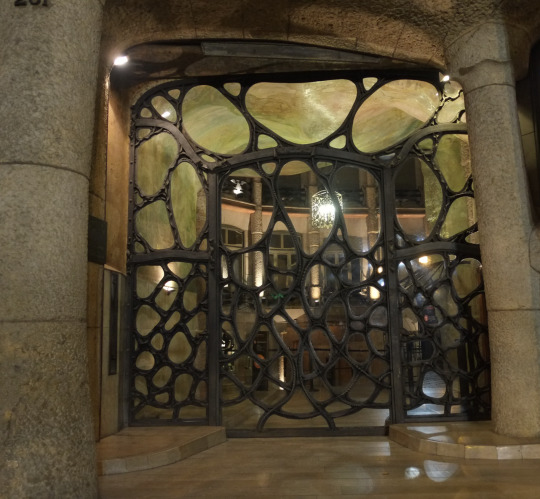

Casa Mila (La Pedrera) by Casey Yee
#Casey Yee#architecture#buildings#design#art#iron#metal#doors#windows#glass#antoni gaudí#casa mila#la pedrera#photography#black sky#night#dark#gaudi
2K notes
·
View notes
Text


La Pedrera. Photos from Ajuntament de Barcelona and La Pedrera.
Nowadays, la Pedrera is one of the most famous building in Barcelona, Catalonia. It's one of the most emblematic buildings in the Catalan Modernism style, and has been declared part of the UNESCO World Heritage Site "Works of Antoni Gaudí".
But it hasn't always been recognised as good architecture, all the opposite! In fact, take a look at its name: it's technically called Casa Milà (house of the Milà family), but locals always call it "la Pedrera", which means "the quarry" in the Catalan language. When it was built, in 1910, Barcelonians thought it looked like an ugly piece of stone-y quarry mountain in the middle of the city.
But that's not the only thing that they thought it looked like. Let's see some parodies that were published at the time:

In 1909, the popular magazine Cu-Cut! published this vignette of a mother and a son walking in front of the house, when the child asks his mom "was there also an earthquake here?". This is a reference to an earthquake that happened in Sicily the previous month, and to the house's bendy shapes that look like it was shaken.

In 1925, the children's magazine En Patufet also joined in, with a vignette where the owner realises he can't hang up curtains* on this windows.
*Note: I'm using the translation "curtains" as a simplification so that English speakers without a detailed knowledge of Catalan culture can understand the joke. The vignette actually uses the word "domàs", meaning a decorative textile that is hanged from balconies during holidays.

In 1910, Cu-cut! compared it to a mona, the cake that Catalans eat on Easter Monday, by drawing a vignette where a child says "Daddy, daddy, I want a mona as big as this one!".

Three times did the magazine El Diluvio mock this building.
First, in 1910, they called it a "Medieval architecture model, between burrow and burial, that I don't quite dislike". It described its future in the following way: "the round gaps in the façade have become dark holes where all kinds of vermin come in and out: crocodiles and rats, but also snakes, hedgehogs, owls, sea monsters... Two undulating lines wrap up the building, which stands in front of an absolutely black sky. Above it, in the rooftop, the chimneys, the air vents and the stairs' endings have stopped being whipped cream mountains to become sinister piles of skulls."
In 1911, El Diluvio striked again, comparing the building's cast iron handrails to a fish stand. Their illustration had Casa Milà with a sign saying "cod entrails sold here!".
And lastly, it made fun of the controversial statue of Our Lady of the Rosary that was supposed to go on top. The Milà family in the end decided not to place the statue (some say because they didn't like how the sculptor made it, some say it's because they were scared of having a religious symbol after the 1909 anti-clerical riots) but the architect Gaudí, who was a very religious man, insisted on having it. This caused the Milàs and Gaudí to argue, which the magazine represents with a caricature of Mr. Milà wearing a Tarzan-like loincloth and branding a whip fighting against Gaudí wearing a pith helmet, grabbing him by the hair and hitting him with a hammer. The text under the image translates to "Will the Virgin Mary stand on top of the peculiar monument? Who will win, Gaudí or Milà?".
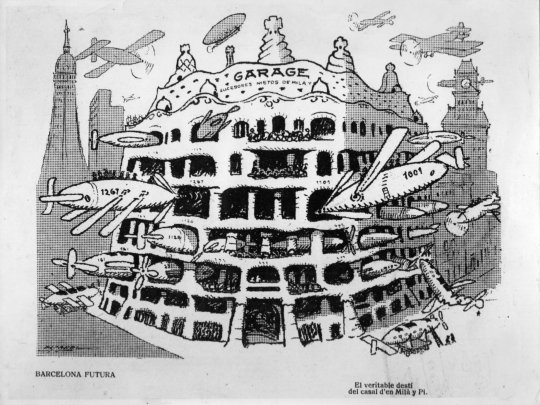
In 1912, the popular magazine L'Esquella de la Torratxa imagined that this extravagant futuristic building could only be a garage for parking airship and air-planes. This satirical drawing is titled "Future Barcelona. The true destiny of the Milà and Pi house". (Milà and Pi were the owners of this building).
The text that accompanied this illustration wondered if this building is the Wagnerian Valhalla, an anti-aircraft defense for the Moroccan War, or a hangar for zeppelins.
What do you think? Was the banter justified?
#la pedrera#casa milà#barcelona#catalunya#història#arquitectura#arts#history#architecture#antoni gaudí#gaudí#unesco world heritage#world heritage#historical#history tag#art history#art#modernisme#travel
177 notes
·
View notes
Photo
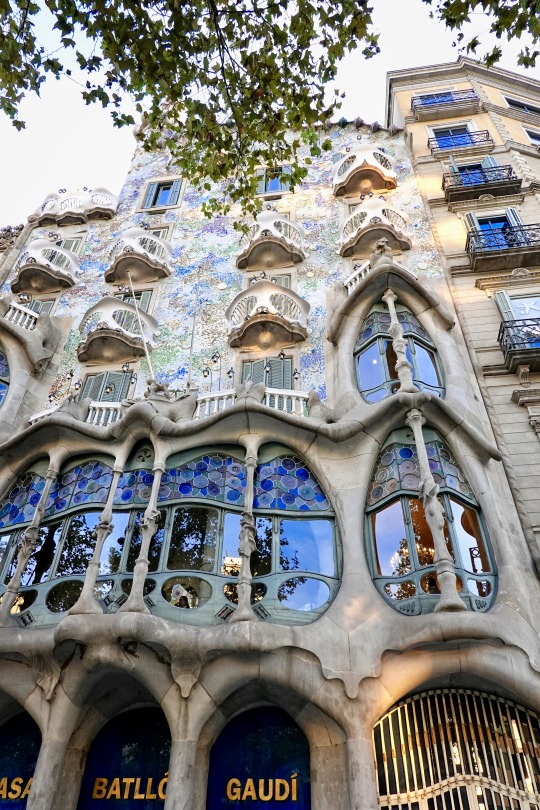
Barcelona: Casa Batlló, Gaudí
177 notes
·
View notes
Text
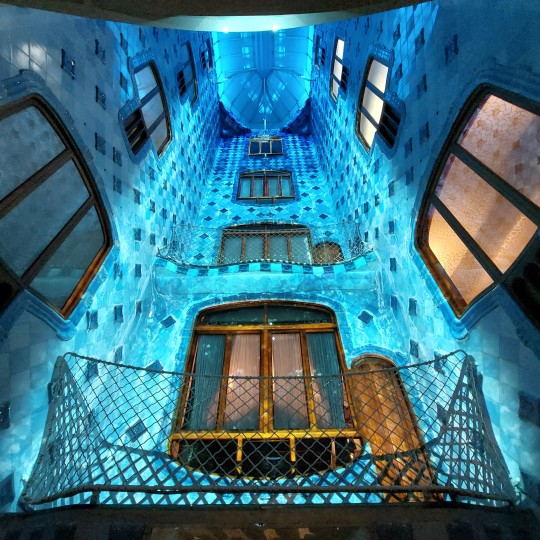
Casa Batlló
-by XabierAM 2023
#original photographers#barcelona#catalunya#architecture#arquitectura#modernismo#modernisme#art noveau#antoni gaudí
215 notes
·
View notes
Text
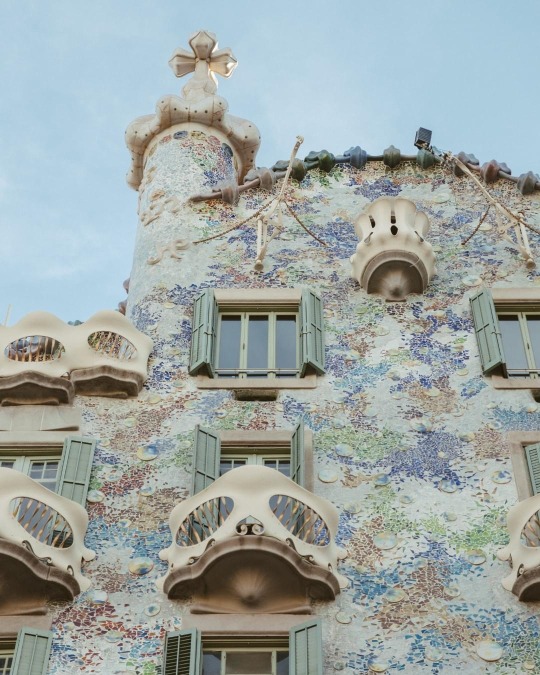

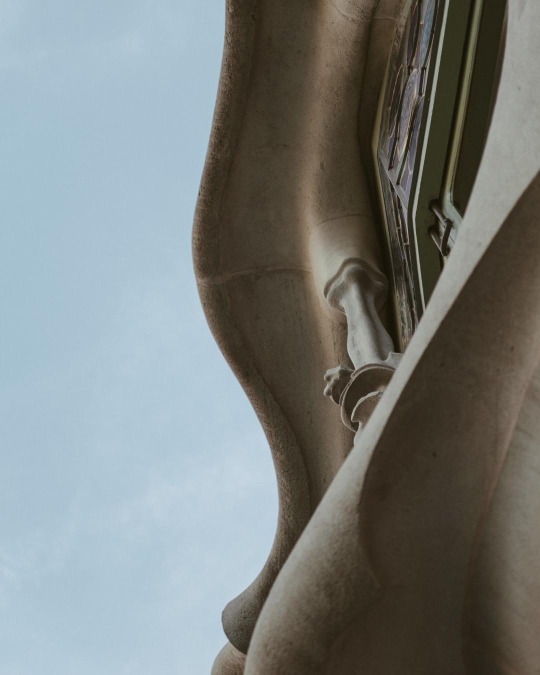

casa battlò
barcelona (españa)
38 notes
·
View notes
Photo

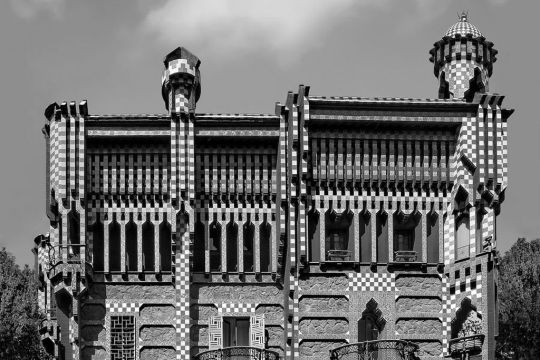
1. Casa Vicens Antoni Gaudí
https://www.elledecor.com/it/best-of/a28324681/casa-vicens-antoni-gaudi-barcelona/
2. Casa Vicens Antoni Gaudí
113 notes
·
View notes
Text

La Sagrada Família designed by Catalan architect Antoni Gaudí.
10 notes
·
View notes
Text

#Barcelona#Cataluña#Spain#Gaudí#Antoni Gaudí#building#architecture#Casa Batlló#facade#colourful#roses#Sant Jordi#princess#dragon#red#blue#green#my photos#Canon photography#Canon G9X#tourism#travel#spring#aesthetic
3 notes
·
View notes
Text






Casa Batlló, Barcelona - December 2022
40 notes
·
View notes
Text

Sagrada Familia
Barcelona, Spain
#photographers on tumblr#architecture#sagrada familia#churches#barcelona#spain#antoni gaudí#vertical#original photographers#original photography#december 2023
127 notes
·
View notes
Text





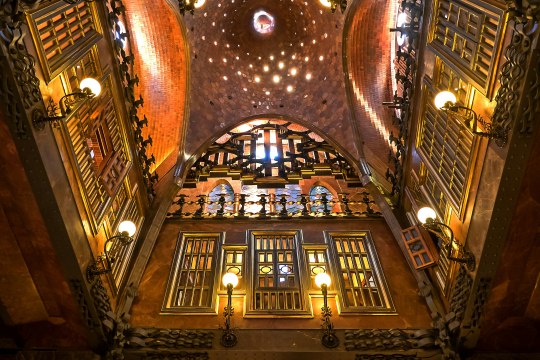


Güell Palace (designed by Antoni Gaudí), Barcelona, Catalonia, Spain
Manuel Torres Garcia
3 notes
·
View notes
Photo

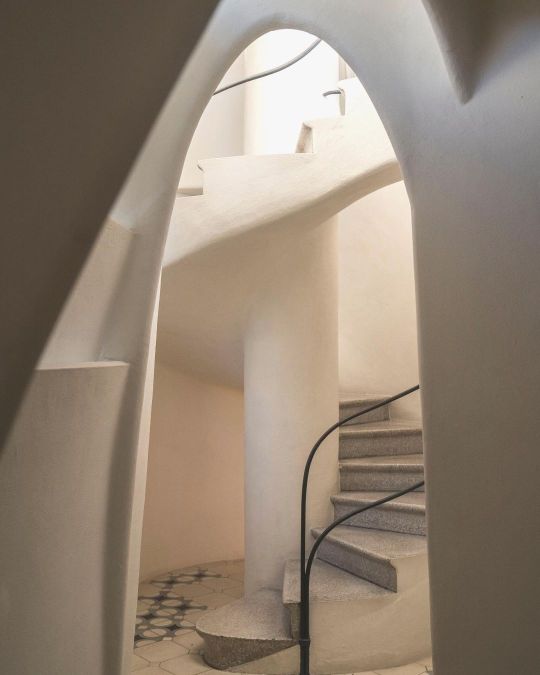


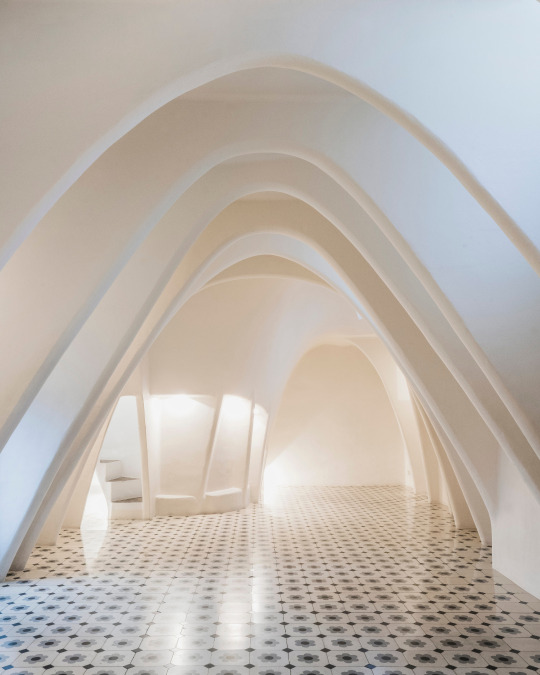

Casa Batlló in Barcelona (Catalonia).
Casa Batlló was designed by Antoni Gaudí and built between 1904 and 1907. It has become one of the most iconic buildings of the Catalan Modernist style (Modernisme).
Photos by Casa Batlló on Instagram.
#casa batlló#barcelona#catalunya#modernisme#antoni gaudí#arquitectura#arts#catalonia#catalan modernism#architecture#gaudí#1900s#early 1900s#travel#europe#art nouveau#travel photography#landmark#unesco world heritage site#world heritage
381 notes
·
View notes
Photo

Barcelona: Casa Batlló
110 notes
·
View notes
Text
Art Nouveau, quando tra fine 800 e inizi 900 nasceva la corrente dove “la linea è forza”

#art nouveau#henri de toulouse lautrec#liberty#novecento#illustration#famous artists#mostre#museum#pablo picasso#gustav klimt#antoni gaudí
2 notes
·
View notes
Text
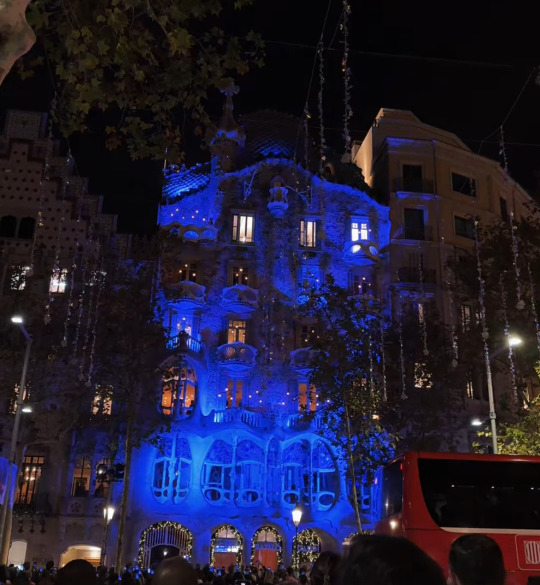
architecture by antoni gaudí
10 notes
·
View notes